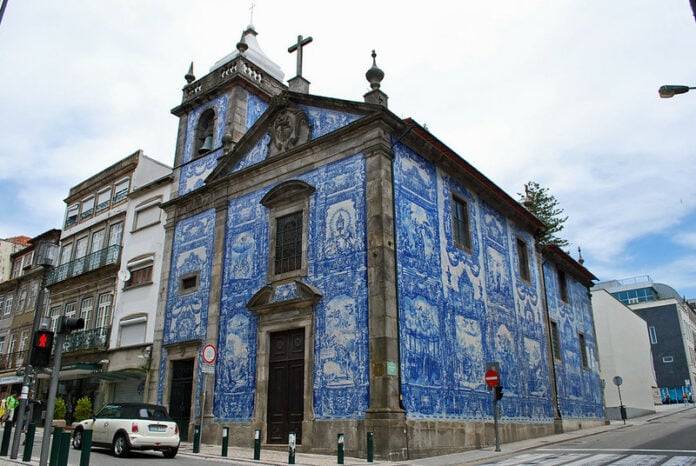Porto is a city known for its blend of historical charm and vibrant creativity and offers visitors a stunning variety of architectural styles. While many flock to see iconic structures like the Dom Luís I Bridge or the intricate azulejos of São Bento Station, those with a keen eye for the unique will find that Porto is also home to some of the most unconventional buildings in Portugal. This guide explores eleven of Porto’s strangest, yet most captivating, buildings—each offering a glimpse into the city’s imaginative architectural spirit.
1. Casa da Música
Designed by Dutch architect Rem Koolhaas, Casa da Música is Porto’s premier concert hall and a modern architectural marvel. Inaugurated in 2005, it was built as part of Porto’s 2001 European Capital of Culture program.
Casa da Música is celebrated for its bold, irregular geometric form that defies the traditional boxy concert hall design. Its white concrete surface and dynamic angles make it look almost like a spacecraft that landed in the middle of Porto’s historic center. Inside, the acoustics are cutting-edge, and the various rooms are shaped by peculiar designs, such as the large glass windows overlooking the city, which create a juxtaposition between performance space and urban landscape.
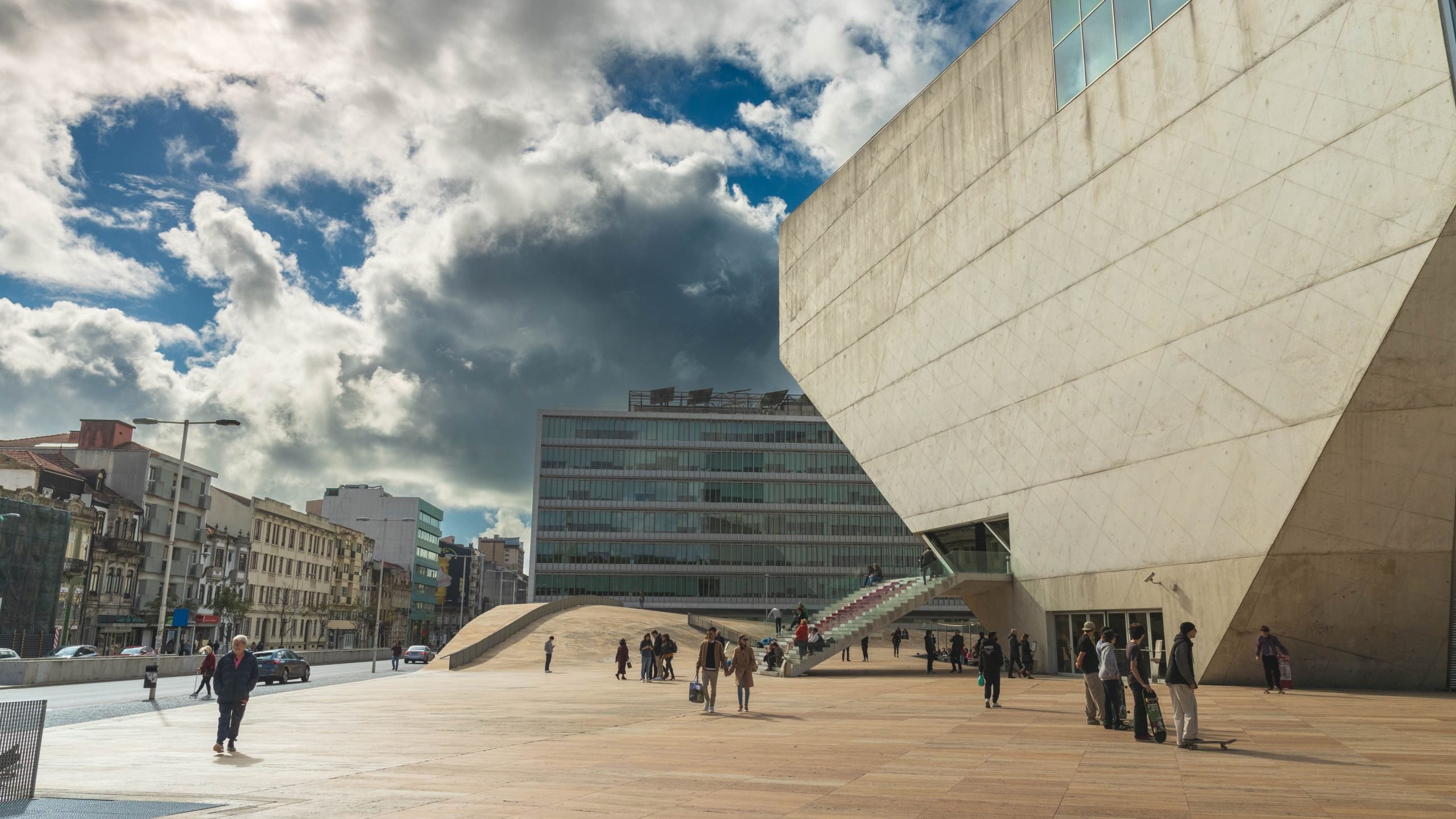
2. Edifício Transparente
Located along Porto’s coastal road, the Edifício Transparente (Transparent Building) was completed in 2002 by Portuguese architect José Gigante. Its purpose has shifted over time, now housing restaurants, shops, and cultural spaces.
True to its name, the building is constructed almost entirely from glass, giving it an ethereal, weightless quality. Its see-through nature allows light to flood in and offers panoramic views of the Atlantic, making it blend into its seaside surroundings. The contrast between the industrial glass structure and the natural coastline is both striking and unusual.
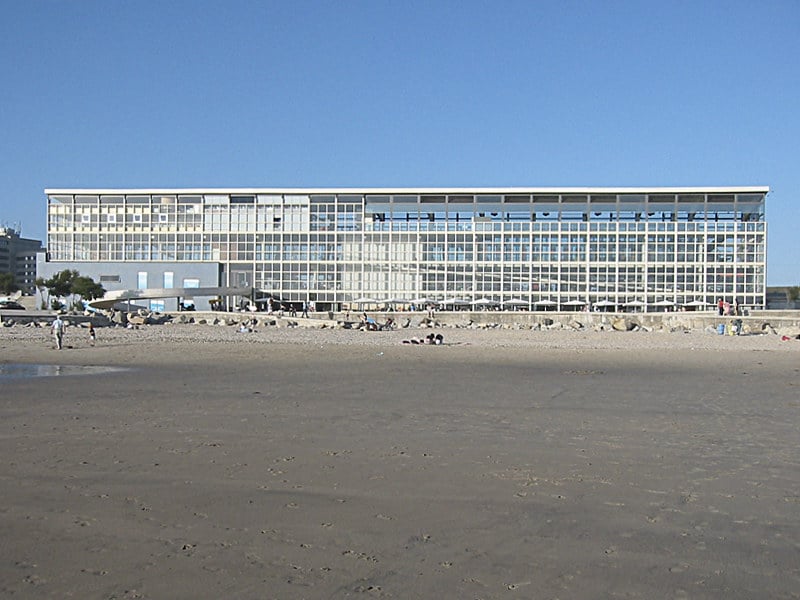
José Carlos Melo Dias, Flickr
3. Casa de Chá da Boa Nova
Designed by Álvaro Siza Vieira, one of Portugal’s most renowned architects, this modernist tea house was completed in 1963. It sits dramatically on rocky cliffs overlooking the ocean in Leça da Palmeira, just outside Porto.
Built almost directly into the landscape, Casa de Chá da Boa Nova blurs the boundaries between architecture and nature. Its low, angular profile contrasts with the rough texture of the surrounding rocks. The building’s organic materials, such as granite and wood, allow it to merge with its environment, which creates a subtle yet surreal atmosphere where visitors feel connected to both the building and the natural world.
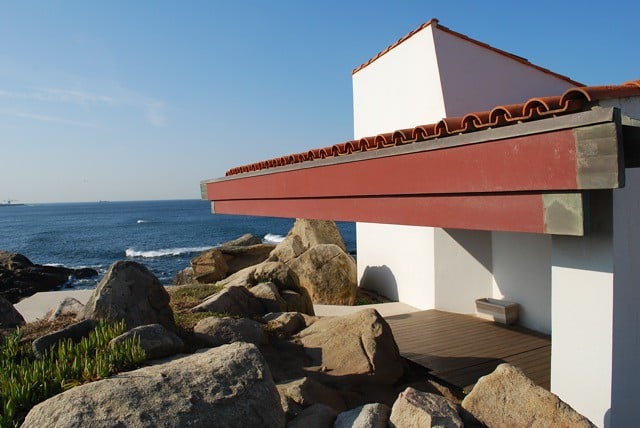
4. Torre dos Clérigos
Built between 1732 and 1763 by the Italian architect Nicolau Nasoni, Torre dos Clérigos is one of Porto’s most recognizable landmarks.
While its Baroque style might not seem “strange” in the traditional sense, the sheer height of this tower—standing at 75 meters—was highly unconventional for its time. Its tall, slender form punctuates the Porto skyline, and its almost precarious-looking stature makes it a curious sight. The spiral staircase inside, with 225 steps, offers an intimate and slightly dizzying ascent, with breathtaking views at the top.
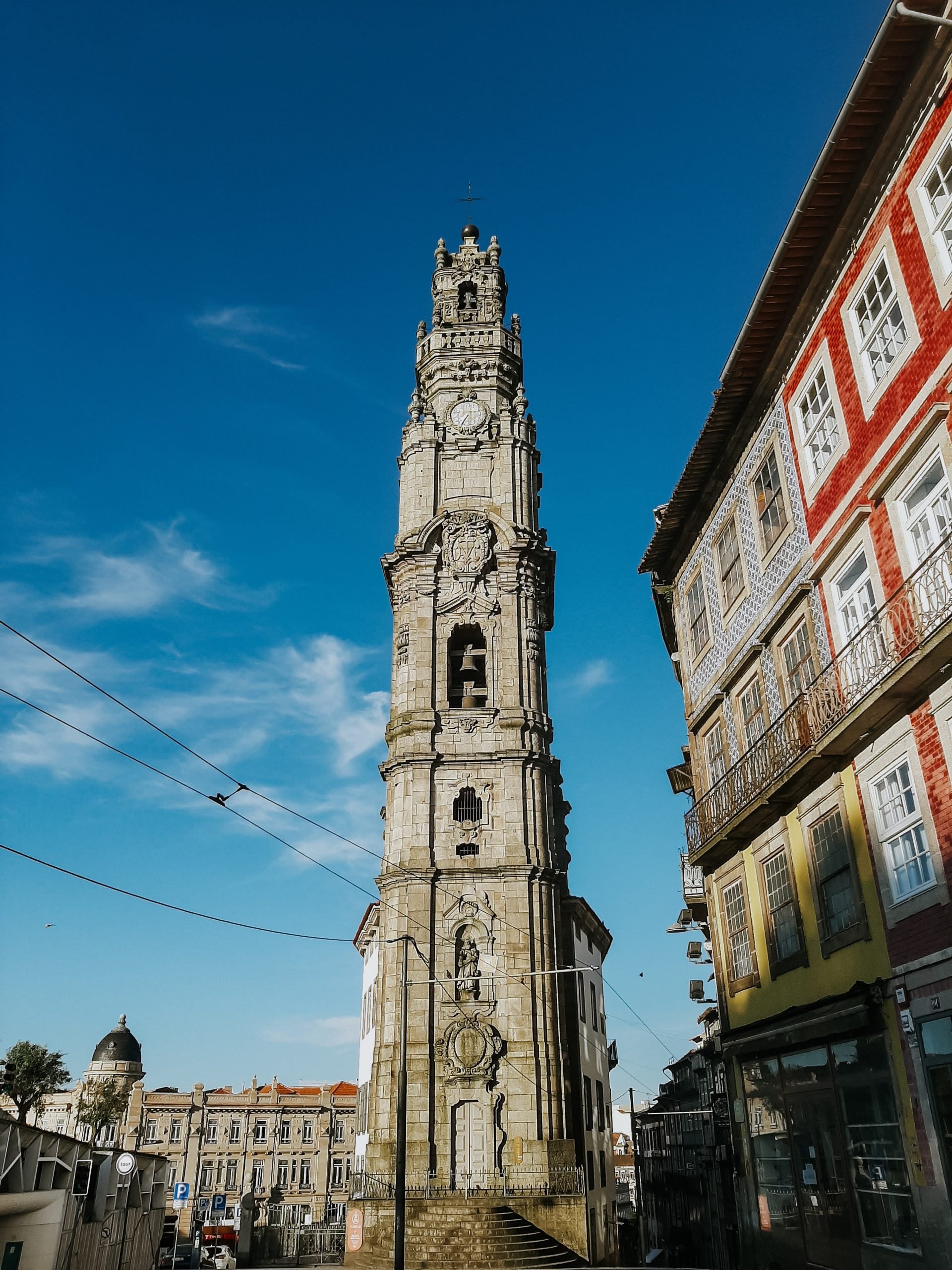
5. Burgo Tower
Designed by the 2011 Pritzker laureate Eduardo Souto de Moura, the Burgo Tower is an office complex completed in 2007. It stands as a symbol of Porto’s push toward modern urban development.
The Burgo Tower is all about sleek, minimalist lines and starkness. Its monolithic form and lack of ornamentation give it a slightly menacing, futuristic vibe that contrasts sharply with the historic architecture of Porto. Despite its simplicity, the Burgo Tower is captivating in its unapologetic modernism, making it truly an oddity among Porto’s older buildings.
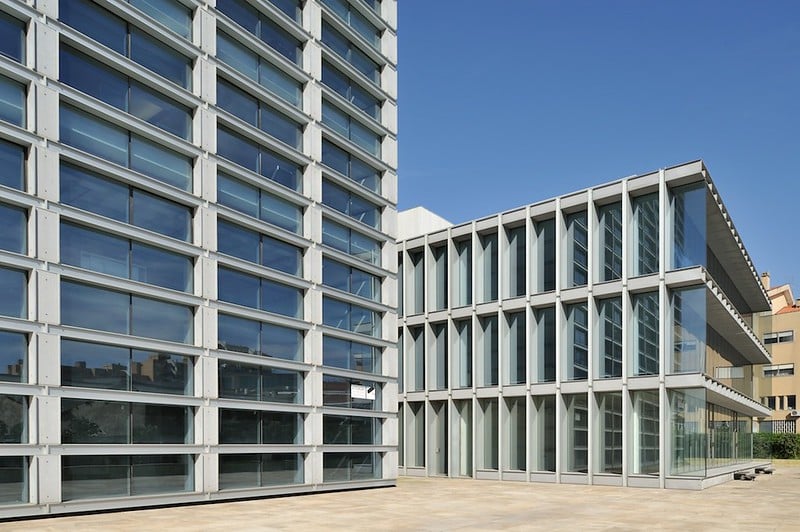
6. Imperial McDonald’s
Located in what was once the luxurious Imperial Café, this McDonald’s on Avenida dos Aliados is widely considered one of the most beautiful McDonald’s locations in the world.
Housed in a grand Art Deco building from the 1930s, this McDonald’s retains many of the elegant features of the old café, including crystal chandeliers, ornate stained-glass windows, and the building’s original marble finishes. The unusual pairing of fast-food branding with lavish, historic décor creates a surreal experience and makes this spot both a cultural and architectural curiosity. The building’s preserved splendor and unconventional use as a fast-food restaurant draw in visitors curious to experience a bit of Porto’s glamorous past with a modern twist.
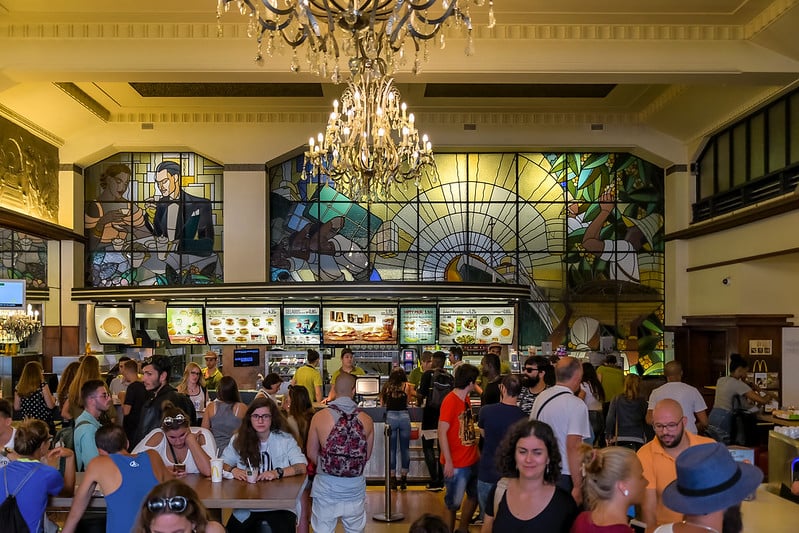
Jorge Franganillo, Flickr
7. Casa Escondida (Hidden House)
The Casa Escondida, or “Hidden House,” is an intriguing historical feature nestled between Porto’s twin churches—the Igreja do Carmo and the Igreja dos Carmelitas Descalços. Though nearly invisible from the street, this narrow structure serves as a physical and symbolic divider between the two churches, built in the 18th century to ensure that the monks and nuns could not inhabit adjoining spaces.
With its slim façade and almost secretive presence, the Casa Escondida provided a secluded space for clandestine meetings, especially during the Siege of Porto in the early 19th century. Its hidden nature made it an ideal refuge for strategic discussions, and today, it stands as a subtle reminder of the church’s role in Porto’s storied past, blending mystery with the city’s rich historical and architectural heritage.

8. Piscina das Marés (Tidal Pools)
Also designed by Álvaro Siza Vieira, these saltwater swimming pools, completed in 1966, are located in Leça da Palmeira.
These pools are carved into the natural rock formations along the beach and give swimmers the sense of floating within the landscape. The architectural intervention is minimal, relying on natural elements to define the space, making it one of the most peculiar and serene public pools you’ll ever experience. It’s a brilliant example of how modern architecture can complement nature rather than dominate it.
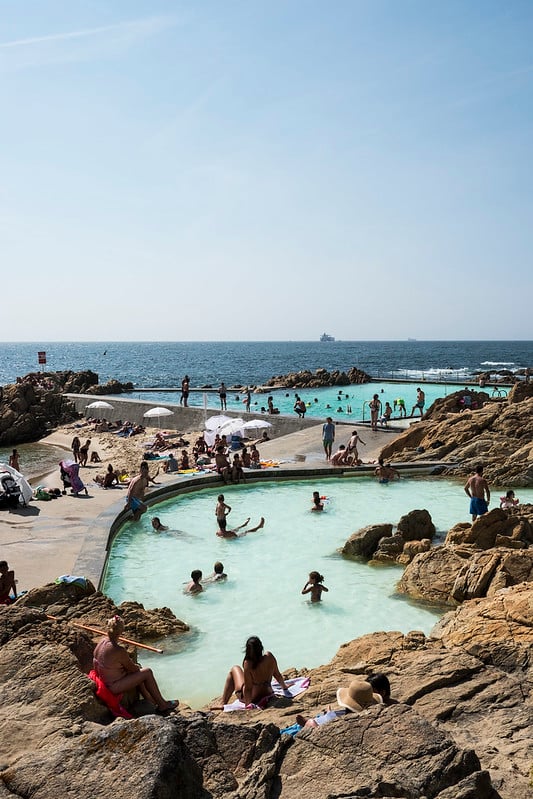
9. Teatro Rivoli
Originally opened in 1913, the Rivoli Theatre was redesigned in the 1920s to reflect a more modernist, Art Deco style.
Its eclectic history, which saw it shift from a classic Belle Époque theater to an Art Deco cinema and performance space, gives the Rivoli a unique dual identity. The building’s exterior is a curious mix of grandiose, classical elements and sleek, modern lines. Inside, the theater’s restoration preserved many of its Art Deco features, creating a time capsule-like atmosphere that is both glamorous and oddly anachronistic.

10. Capela das Almas
The Capela das Almas (Chapel of Souls) is a must-see for anyone interested in Portugal’s rich tradition of azulejos. Covered in a stunning expanse of blue and white tiles, the chapel’s exterior is stunning spectacle of nearly 16,000 tiles that depict scenes from the lives of Saint Francis of Assisi and Saint Catherine, the church’s patron saints. Designed by artist Eduardo Leite in 1929, the tiles capture the depth and drama of religious devotion in vivid, intricate detail. Each scene is carefully rendered in a classic blue-and-white color palette, a hallmark of Portuguese tiling, and was produced at the historic Viúva Lamego Ceramics Factory in Lisbon.
The unique tile display captures the attention of anyone who passes by and is an essential destination for anyone exploring the city’s architectural and religious heritage.
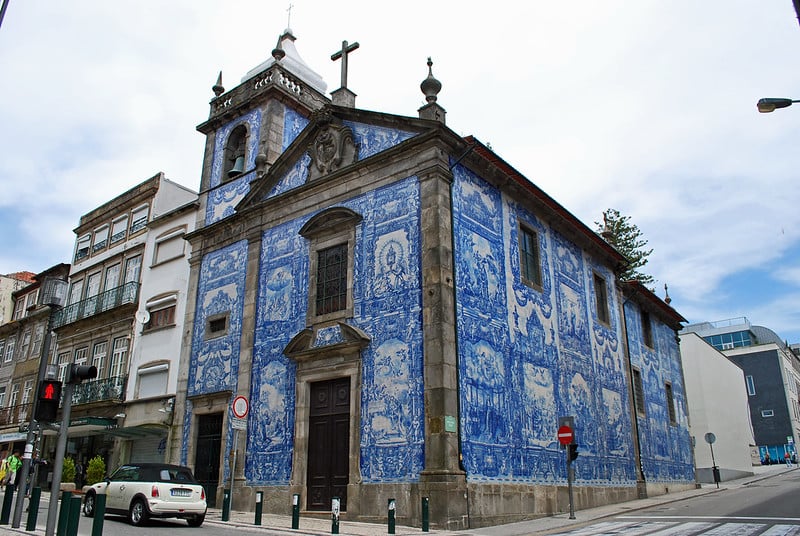
11. Livraria Lello
Opened in 1906, Livraria Lello is one of the most famous bookstores in the world, and a beloved Porto landmark.
While its neo-Gothic façade is beautiful, it’s the interior that truly makes Livraria Lello strange. The dramatic, curvaceous wooden staircase that spirals upward through the middle of the store feels almost organic, as if it’s alive and growing. Combined with the stained-glass skylight and richly detailed bookshelves, the space feels more like a fantastical cathedral than a bookstore. The enchanting atmosphere makes it a must-visit for both architecture lovers and bookworms.
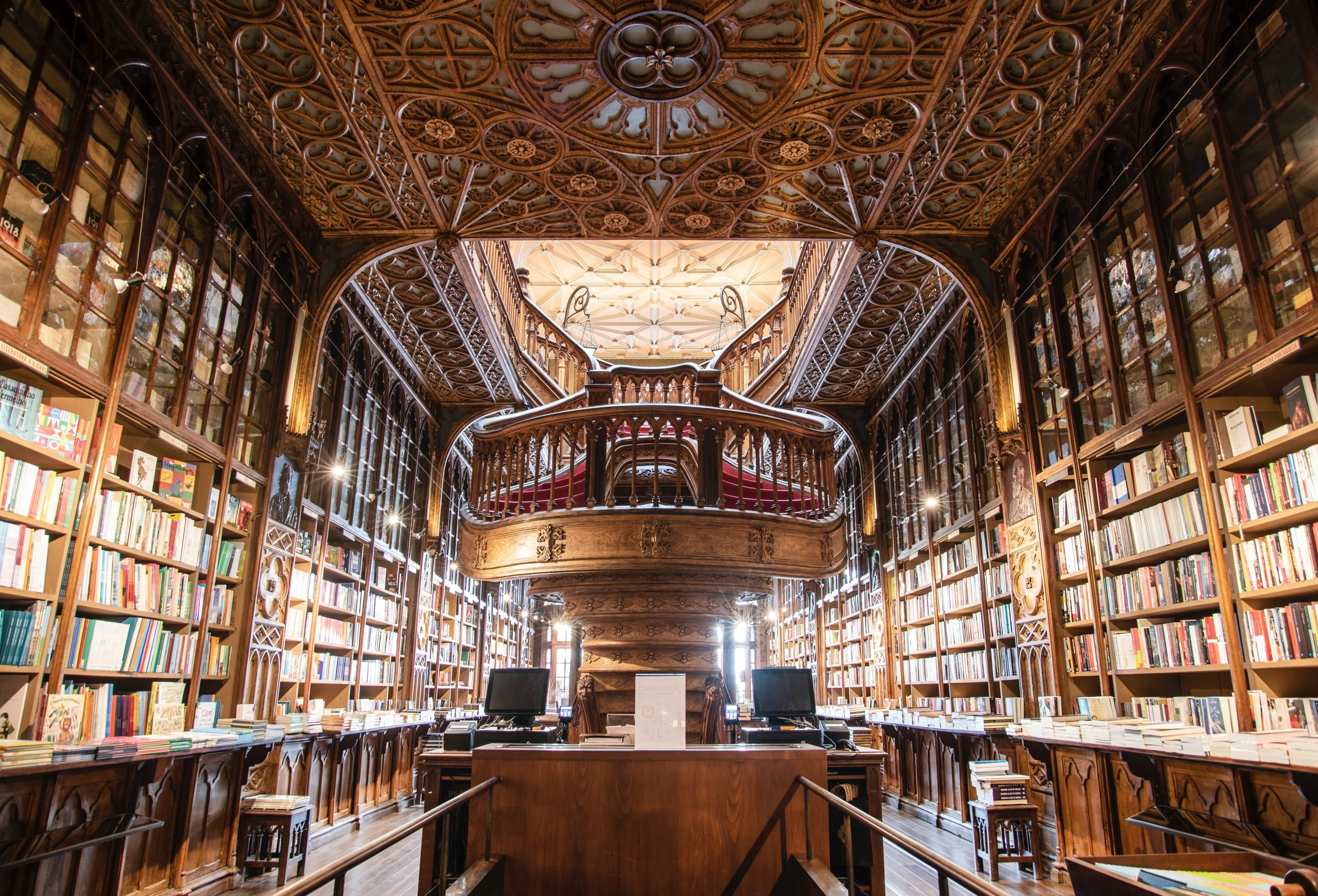
In Conclusion
Porto is a city of architectural contrasts—where ancient meets avant-garde, and where the strange often becomes the sublime. These eleven buildings encapsulate the city’s bold spirit, inviting visitors to look beyond the conventional and explore the unusual in every corner. From concert halls shaped like spaceships to hidden houses and tidal pools carved into rock, Porto’s most peculiar buildings promise to leave a lasting impression on all who encounter them.

